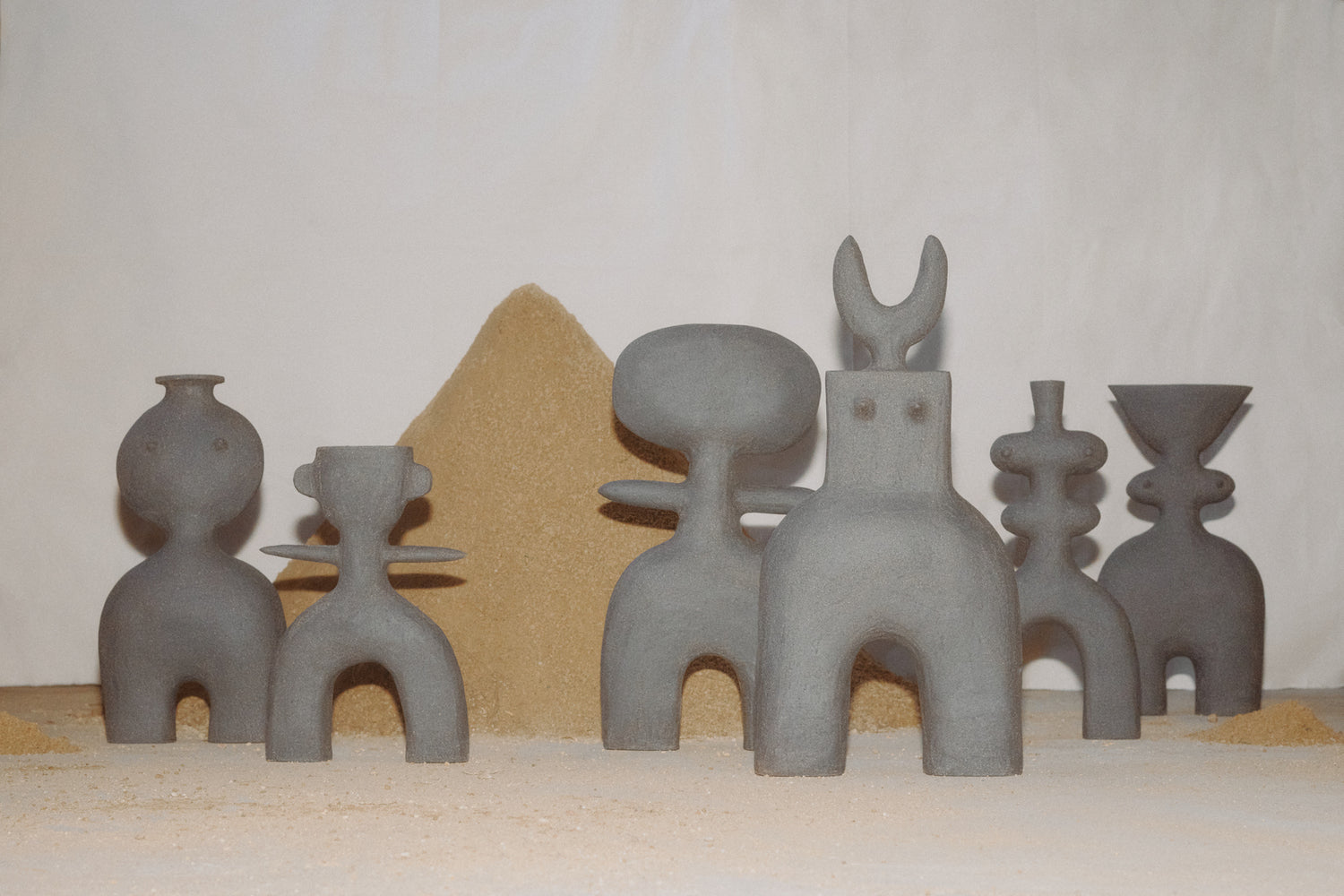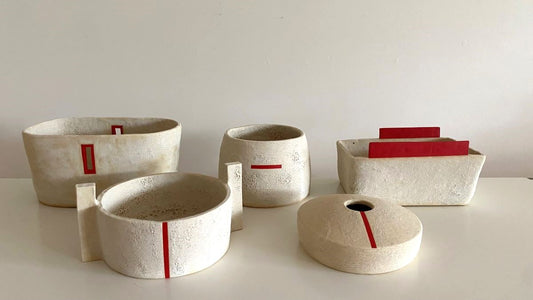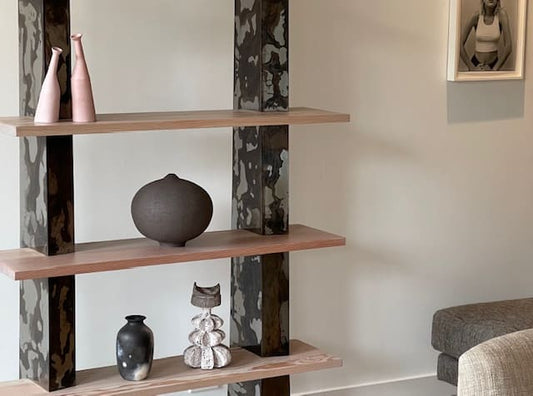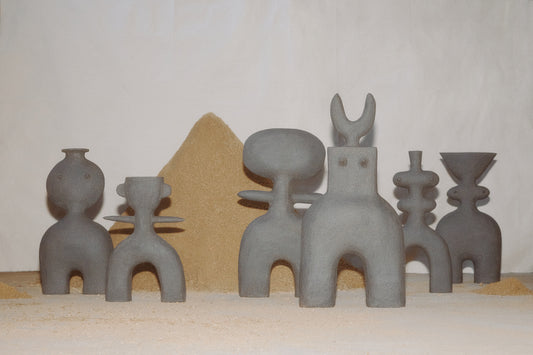I met ceramic artist Noe Kuremoto via Zoom back in August. It didn’t take long before we were in deep discussion on a variety of topics ranging from art and the art world, to personal experiences including parental expectations, moving from Japan to the UK, the impact of motherhood etc. I could have happily discussed these topics, and many more, with the artist all day long. Noe is warm and generous with her thoughtfulness as well as her openness.
Born in Osaka, Japan, Noe grew up in a household where her father was an artist. At the time this situation presented a couple of challenges. Firstly, carving out a career as an artist in Japan was challenging for women, especially in ceramics. Until fairly recently, women were not even allowed to fire in wood kilns. Secondly, the option of being an artist in the shadow of her father, also seemed untenable. The most logical solution seemed to be to hide in the western world for a while.
In 1998 Noe moved to London, UK and enrolled in Central Saint Martins College of Art where she graduated with first class honours in Fine Art. After working in video art she eventually moved full time to ceramics. Establishing her life in London, the artist settled down with her partner and has three children. She so eloquently and honestly describes that after establishing herself as a working artist, motherhood changed her. Her priorities shifted, her available studio time reduced and she realized that she had transitioned to a new identity as a “mother artist” - but what did that mean?
For Noe it meant a number of things - such as figuring out if she could continue to work as an artist or have to take a 9 to 5 job for more security, and work on her art when she could squeeze it in. However, perhaps more importantly, becoming a mother drew her back to her motherland of Japan. Suddenly, the country that she ran from as a teenager, beckoned her back. She had a strong urge to pass on the traditions of the language, food, culture and history to her children. The artist looked to, and was inspired by, the wisdom of ancestors and the importance of family. The talismans and warrior figures that were part of Japanese cultural imagery began to inspire. The artist considered the tradition of the terracotta Haniwa figures from the ancient Kofun period that were placed on burial grounds to protect souls as they transitioned to the afterlife. Inspired by this idea of protection, Noe posited that life is challenging now and our souls need protection in this life.
The artist’s contemporary interpretation of this traditional Japanese tradition inspired her series of Haniwa Warriors. She makes each sculpture by hand using simple tools and the forms are both playful and sophisticated. I’m so inspired by her incorporation of her fine art skills and her traditional Japanese references - as well as her ability to figure out how to continue to work full time as an artist. Noe describes her work…“These sculptures come from my deep ocean of childhood memories. I hope every piece I make helps my sons to see the world as a beautiful place. My artwork is my journey to strengthen my soul. I would like to share them with you. A talisman to have the courage to live our life as truthfully as we can.”
The artist lives and works with her family in London, UK including her sausage dog Lassie. She is currently building a new studio in the lake district of Lithuania in the middle of a forest.





